Preston S.
May 31, 2023
•3 minutes
Overview of Popular Keyboard Switch Housing Materials
In this short and concise guide, you will discover the different types of mechanical switch housing materials that you need to know for your upcoming build.
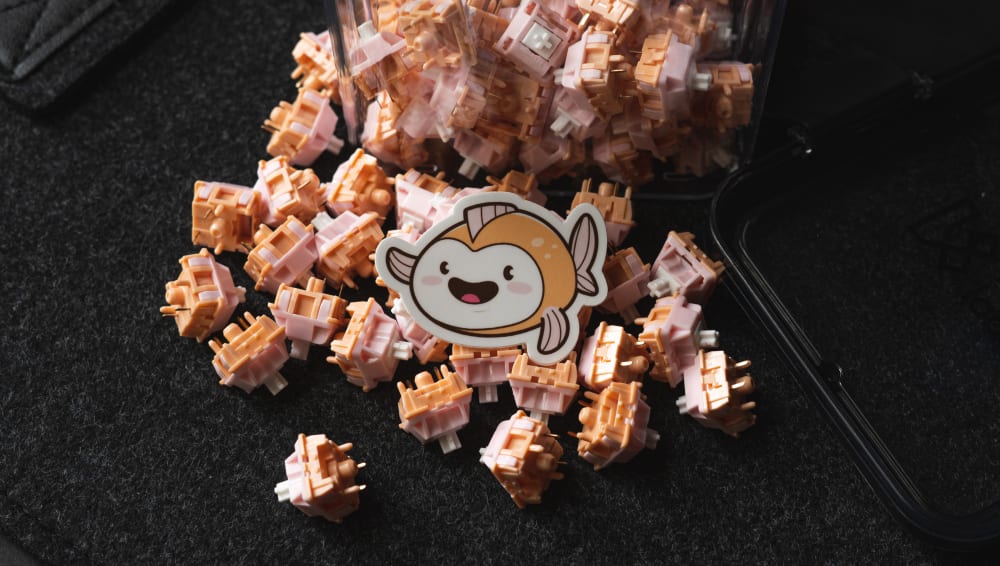

Salmon Tactile Switches
There are so many switch options to choose from nowadays and with that comes so many different switch housing materials as well, but how do they differ from each other? The most commonly used materials are POM, Polycarbonate, Nylon, and UHMWPE. Let's go through each material and figure out what kind of sound and feel they produce.
POM:
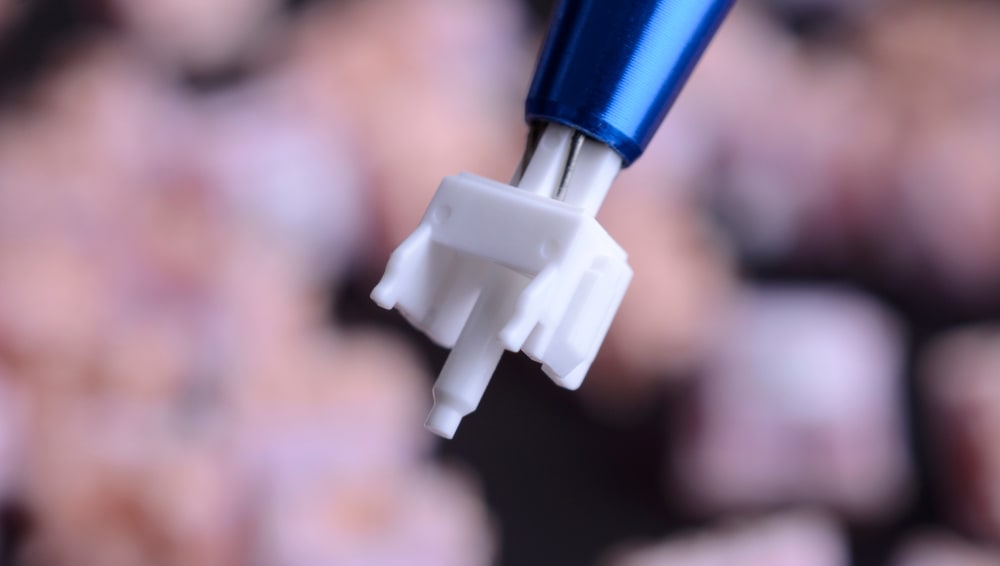

Salmon Tactile Switch POM Stem
POM, is a material that is very commonly used amongst switches and is most commonly used on the stem of the switch. For example, some switches will have a nylon top and bottom housing but feature a POM stem. The reason for this is because POM is said to have a lower coefficient friction compared to the other materials which as a result makes the switch feel smoother even if you haven’t lubed it yet. I would still recommend lubing your stems even if they are made out of POM as that can make the switch even smoother than it already was leading to an even better typing experience.
Polycarbonate:
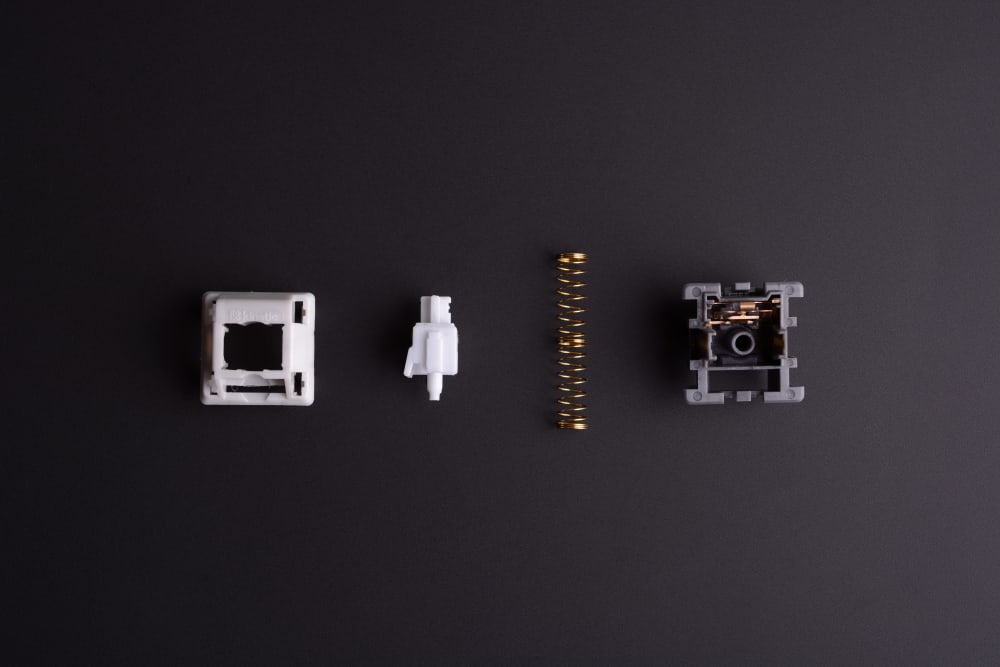

Husky Linear Switches with PC Housing
Polycarbonate switches are probably the most common switches you see on the market as this material is used for pretty much every clear switch you can find. A very common example is Gateron’s line of switches. Polycarbonate switches tend to sound a bit clearer and also have a higher pitch as well compared to non-polycarbonate switches. Now for me, I just like this material because it often looks really cool in keyboard builds, but if you want to learn more about the science behind these materials, ThereminGoat has a great article that talks more about the science side of things which can be found here.
Nylon:
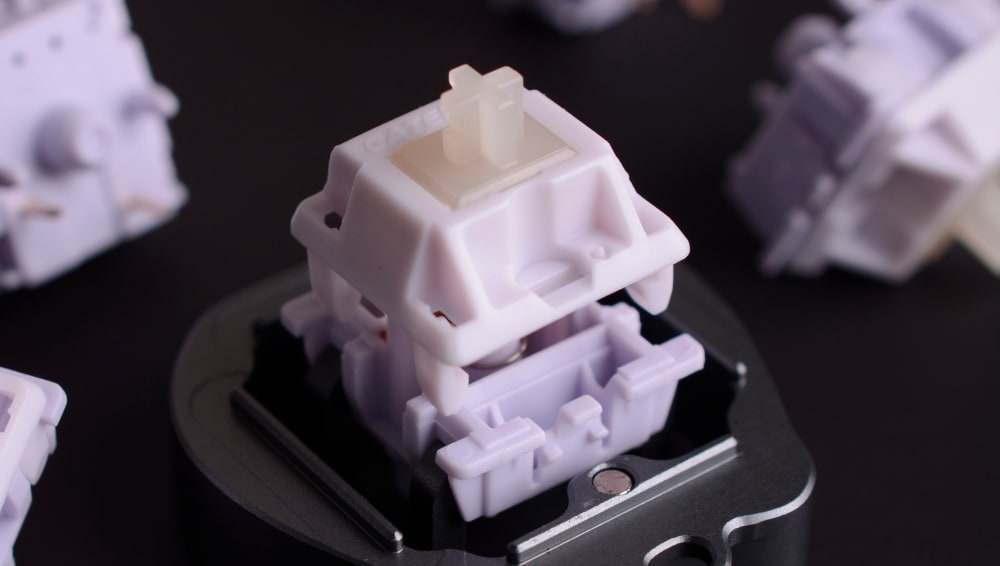

Hippo Linear Switch with Nylon Housing
Nylon is a material that is most commonly used for opaque switches and is apparently very easy to work with which is probably the reason why it is Cherry’s go-to material for their Cherry MX line. Usually, people say that Nylon produces a deeper or “thockier” sound signature so people tend to gravitate towards this material if they are chasing that sound in a keyboard, but different brands produce different nylons so for example, Gateron’s Nylon material will sound different than Cherry’s nylon, but they both will generally give you a deeper sound signature.
UHMWPE:
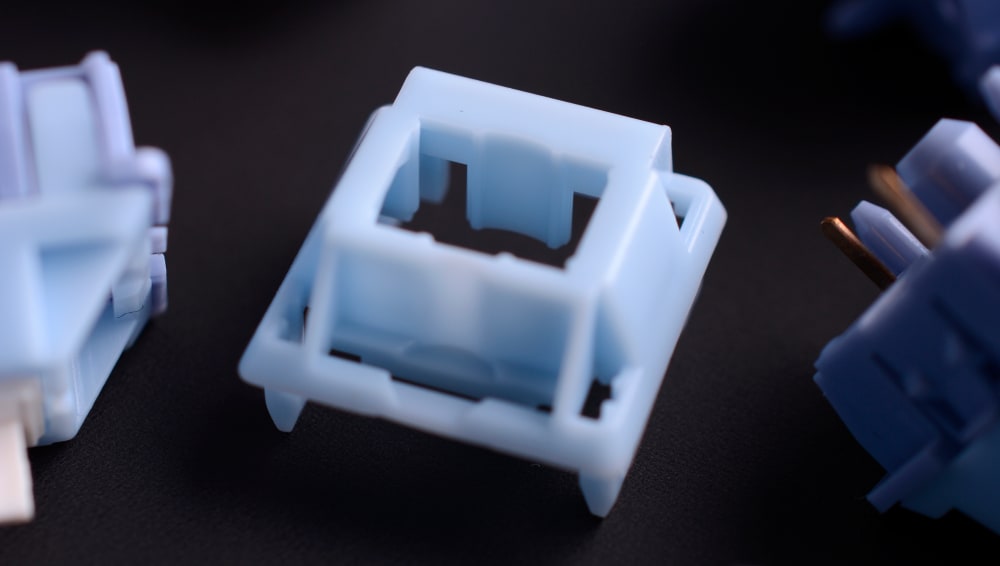

Penguin Tactile Switch Top Housing (UHMWPE & PC mix)
UHMWPE is a material that has even less friction than POM. It is also a softer material that is self-lubricating meaning it gets smoother the more you use it, but I still recommend lubing it yourself as well. It also has a softened bottom out and top out plus because it has less friction than POM, it provides a super smooth typing experience. The only downside is that this material is on the softer side, so people have reported that if you keep swapping out keycaps frequently with switches that have this material, it can cause them to start fitting loose in keycaps. Sound-wise, it provides a poppier sound signature that is quite pleasant to listen to. Gateron Hippo switches were their first switch to use an UHMWPE stem.
At the end of the day, there are a lot of switch materials out there, and some switches even feature custom blends that aren’t really told to the public as to what they are specifically made of. If you wanted to create a thockier board, there is a high chance that your switches aren’t the problem. Switches of course change the sound of a keyboard, but what affects the sound signature the most is the actual keyboard itself.